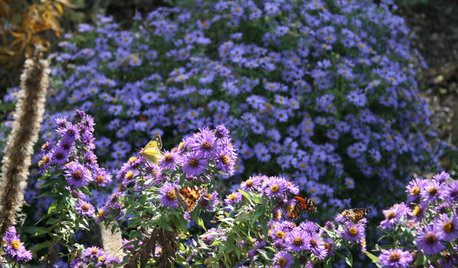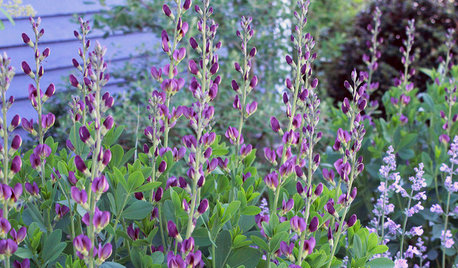Welcome, neighbor, and thank you for considering planting for the butterflies. It is a fascinating hobby and fun to grow FOR living things. I used to design my beds for visual appeal, now I use my small gardens for growing plants that will host and feed the butterflies and hummingbirds. It makes the work worthwhile to me and I really enjoy watching for and studying about all the little creatures.
You ask about local sources for plants or seed. It is probably too late for to be looking for these types of potted plants at the big box stores and the private nurseries don't always carry this type of plant and if they do, everything is probably gone this late in the season. I'm not certain I've ever seen seed locally for most of the plants I tend to grow. Let your fingers do the walking and check around. Our local Lowe's did carry A tuberosa (our native Butterfly Weed) this season. This plant is easy to start from seed but it is slow the first year. The second year you will see strong growth and many blooms if it has become established. I have one butterfly weed plant I started from seed two seasons ago. Last summer didn't see much top growth and a few weak blooms. This year it is huge, healthy and is on it's third flush of blooms. I've watched so many flying creatures nectar on it and my one mama Monarch even laid a few eggs on tender new leaves. This has proven an excellent nectar source in our area for many flying creatures.
Butterfly Weed flower bloom, typical orange color:
{{gwi:531085}}
Butterfly Weed flower bloom, unusual darker orange color:
{{gwi:486998}}
For the monarchs, a good host and nectar plant is the Asclepias curassavica, commonly known as tropical milkweed. It is an annual here in our zone 7b but grows quickly, is quick and easy to germinate and is a host plant for the monarchs as well as a nectar plant for many little flying creatures.
Tropical Milkweed flower bloom:
{{gwi:531087}}
I can send you seed for tropical Milkweed plant and if my butterfly weed seed pods mature, I will be happy to send you seed of this plant. It's bloom is the typical medium orange. Occasionally you can find a plant that produces a deep, dark orange. I have one plant with the deep dark organge, in it's second year, but so far, it's not produced a seed pod. Will happily share seed if I ever have any seed from this plant.
Rue will host both the Giant Swallowtail and the Black Swallowtail and is a pretty plant that grows well in our area. It's easy to start from seed and mine gets mostly sun. I think it might do well in dappled sun with a bit of full sun. I'm going to try growing it on my deck and see how it does in the available light there. It is a perennial and takes a year of growth before it developes a lot of growth. Mine stayed green all winter, a bit tattered looking by spring, but I trimmed it and it has grown into a lovely plant, now about 3' tall. I cut from it to feed the Giant Swallowtails as that is the only host plant I have for them. All the black swallowtail eggs and cats I find on it I switch to parsely, in order to save the Rue for the GST's.
Rue - close up of leaves:
{{gwi:531089}}
Giant Swallowtail Butterfly Catepillar (final instar) on Rue:
{{gwi:531091}}
Florence and Bronze Fennel grows well here in limited sun and high shade. It hosts the black swallowtail and if you let it bloom, the blooms attract mama BST's. She will lay eggs all over the blooms. I've read it will come back, year to year, but last summers planting bit the dust this past winter. I had it in full sun and it was a struggle to keep it alive so it might not have developed a good root structure. This year I planted bronze fennel seedlings I started in a raised bed that gets early sun, then high shade the remainder of the day and it's done much better. Will have to see if it comes back next year. It also has a wonderful fragrance.
Bronze Fennel seedlings - first year growth
{{gwi:531092}}
For nectar and for drawing in the butterflies and hummingbirds, you cannot go wrong with the Butterfly bush. These plants are commonly found at our big box stores here in the spring. Cuttings root easily so more can be produced from one purchased plant. It will grow quite large unless you purchase one of the newer shorter varieties. However, it is pruned hard each spring, leaving only about 12-16 inches of the last years growth, which helps keep it down to about 6' tall. Full sun is best for lots of blooms and if you deadhead the spent blooms, it will bloom over a long period of time.
Butterfly Bush - White Profusion
{{gwi:531093}}
Another plant that the flying creatures here (all of them) love is Verbena bonariensis, commonally known as Tall Verbena. It's a weedy looking plant and produces tiny blossom heads on tall stalks that are so attractive to the little flying things in my garden. Plant it at the back of a bed and plant something in front to hide the scraggly looking lower part of the plants and it works well. Mine overwintered and came back this year and is still providing blooms. Even the little hummingbirds feed from it. This spring, I just trimmed the old stalks off and it put up new growth. I've read it reseeds easily but I usually use a covering of mulch and I've only seen maybe three or four new seedlings produced from the first seasons planting. I even left the old stalks and seed heads through the winter, trying to get some new seedlings. I think it would be easy to pull up if it came up where you didn't want it to grow.
Verbena bonariensis - aks Tall / Stick Verbena
{{gwi:505160}}
Verbena bonariensis - tiny flower head and little hummingbird moth
{{gwi:531094}}
Pentas make a wonderfull nectar plant here. It is a lovely plant, blooms all summer and produces continuous flower heads if you deadhead. I prefer the old fashioned variety as a nectar plant but newer varieties are sometimes all you can find at the nurseries. I found Pentas difficult to start from seed and now take cuttings from existing plants to overwinter. It will not overwinter outside but can usually be found in local nurseries in the spring and early summer at a reasonable price.
Pentas Bloom:
{{gwi:531095}}
Of course, for the pipevine ST's, the little A. fimbriata vines we've recently been discussing and are primarily a ground cover for shade areas, grows well here ... I just don't know if it overwinters in ground here. Should know next spring and will report back on whether it survived. I can share seed of this plant. The wooly pipevine, Aristolochia tomentosa, is a big leafed vine that grows well here and is also a host for the pipevine ST's. I've read it starts easily from seed but I purchased my vines live from on-line vendors and if it has produced seed pods, I've yet to see them.
Aristolochia fimbriata vines:
{{gwi:523154}}
Aristolochia tomentosa vines:
{{gwi:531096}}
Lantana is another excellent nectar source and is a lovely and carefree plant. Most Lantana will not overwinter here and will freeze, if left outside. There are one or two that are reported to overwinter in our growing zone; one is 'Miss Huff' and I've forgotten the name of the other one but I think it produces a bright gold bloom. Lantana can be found in the big box stores in the spring and perhaps at local nurseries but you would want to be certain of the variety, if you intend to leave it inground year round. I have a new variety called 'Luscious Citrus Blend' Lantana that is supposed to grow well in a big pot that I'm trying this year. It will have to overwinter in the greenhouse, though, so I'll see how it performs next season. It produces hot bright colors of intense red orange, yellow and a lighter orange and the bloom changes as it ages, becoming a dark rose before dropping the tiny blossoms. If you don't mind throwing it away at seasons end (or provide protection), it might be one to consider for a big pot on a deck or patio. I love the colors and the beautiful green leaves.
Lantana close up of bloom - 'Luscious Citrus Blend'
{{gwi:531098}}
Lantana in a pot:
{{gwi:531100}}
Verbena 'Homestead Purple' overwinters for me and it is one of the first nectar plants to bloom in the early spring, providing food for early arrivals. I tidy it up in very early spring when I clean the beds and it becomes a carpet of flowers when it blooms. Deadheading will usually encourage a spattering of blooms throughout the summer and early fall. Grows about 12-14 inches high and spreads easily by rooting at the leaf nodes but also easy to keep in bounds.
Verbena 'Homestead Purple'
{{gwi:531102}}
Maypop vines are a good draw but it sounds like you might already have some of those close by. I'm growing mine in a huge pot, as my gardens are small and I didn't want to fight the underground runners, but in my second year of growing this vine, I'm not sure I've ever had any of the beautiful Gulf frits visit the vines. Lucky you, to have already experienced this little beauty!
There are many more but these suggestions should get you started. At least I can tell you that the plants I've listed will grow well here and it would be my pleasure to share what seeds I have with you. If you have more questions, please ask and we'll try to help.
Best of luck with your new butterfly gardens.
Mary

















docmom_gw
Related Professionals
North New Hyde Park Landscape Architects & Landscape Designers · Saint Louis Park Landscape Architects & Landscape Designers · Downey Landscape Contractors · Galt Landscape Contractors · Lynwood Landscape Contractors · Maywood Landscape Contractors · Muttontown Landscape Contractors · Oak Harbor Landscape Contractors · Palos Hills Landscape Contractors · Quartz Hill Landscape Contractors · Apache Junction Fence Contractors · Daly City Fence Contractors · Parkway Fence Contractors · San Rafael Fence Contractors · Santa Clarita Fence Contractors